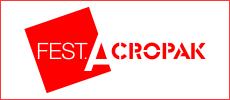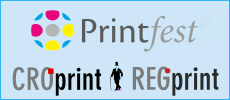«
Back to content
Vol 4 | Year 2012

Peter Lancaster, Digital Print Expert
Survival Will Require Radical Changes
The focus of my consulting activities is how to help printing companies take their businesses online. Now, whether that’s through computers or through mobile, primarily it is using tools like web-to-print, variable data and moving that into a fully fledged e-commerce solutions, and how to get the back end to work from that. It starts with strategy, always. If there’s no strategy, it will fail. The business benefits reflect in how you take your business online and how to make money from it, says
With his 30 years experience in graphic arts, digital print management, and workflow solutions, UK expert Peter Lancaster is an excellent choice for talking about digital print. He is an independent consultant for many printing companies.
Please, introduce yourself to our readers.
I’m an old guy now (laugh). But I’ve always been involved in technology side of printing, from photo typesetting in the late 1970’s, Scitex when they invented digital imaging in the 80’s, I was employee number five or seven (cannot remember exactly) for Indigo when they first launched digital printing in the UK, I worked on the supply side of the industry, than I joined a printing company - a small one with an Indigo press, I was one of the very early users of the Internet, and I looked at the Internet and looked at digital printing and launched Europe’s first web to print system, which is a company that still runs today, after all these years – it was one of the first profitable Internet businesses in the UK. However, I didn’t have any shares in that company, I just worked for them. I left them and I joined St. Ives Graphic Media, Europe’s biggest printing company, where I ran the digital division. Again, I didn’t have any shares in that company – I just worked for them, so I decided to go on my own, and use my skills I had acquired over the years. I went into consulting – I’ve been doing that for 6 years now, so I’ve helped lots of companies around the world use the Internet to take them into the online printing world through strategy implementation and marketing. I am technical, but I pretend I’m not!
You have 30 years of experience in graphic arts, digital print management, and workflow solutions. What is the focus of your consulting activities?
It’s about how to help printing companies take their businesses online. Now, whether that’s through computers or through mobile, primarily it is using tools like web-to-print, variable data and moving that into a fully fledged e-commerce solutions, and how to get the back end to work from that. It starts with strategy. If there’s no strategy, it will fail. The business benefits reflect in how you take your business online and how to make money from it.
You have been introducing a new way of printing to people attending your seminars – online print systems that you have launched (Web-to-Print and Print-to-Web). The advantages of W2P, as you claim, are in its effectiveness – bigger sales, efficiency – lower indirect costs, eco friendliness. Could you tell us more about the system?
Web-to-print as a term is a wrong term. I called my company W2P just because it got me to number one in Google straight away. It is a generic term for doing printing business online. The primary goal for me is for a printing company to protect their own future and it helps them go to their customers and help print to work smarter and harder. It becomes less of a commodity and more of a marketing edge, so that people can modify a design, just by using a browser; they don’t have to design everything in Adobe Indesign and go through the torturous process of getting individual quotes and submitting artwork, where each file is a one-off file. We make a template and in a browser we allow local empowerment. So, a branch manager can make their own changes to the print very simply, just in a few seconds and the entire business process and technical process then happens automatically behind the scenes. If you have 100 branches, you could have 100 branch managers all simultaneously making changes that are relevant to their own branch and bang - the entire workflow, job tickets, everything is created automatically. You couldn’t dream of doing that without a web-to-print system. So, that piece of print then becomes relevant to that individual location. And it could have different pictures, different text, different special offers, different addresses – anything you wish, instantly, the objective being to make that print so relevant that it helps to sell more of the product or service locally.
Related to that, do you see the future of the offset printing industry for the next 5 or 10 years? Moreover, does it have a future?
I think it does! Slowly, inkjet will takeover, hybrid systems like Benny Landa’s Nanography or similar eventually will displace offset technology because it’s more suited to today’s printing business model. Offset has been going on since 1922, so what I think will happen is that we’ll end up with fewer numbers of offset printers and a smaller number of real big, supersized printers. Many printing companies will survive through doing business locally, and digitally – there is no reason why printers can’t survive. Unless they refuse to change – then they won’t!
W2P was set up to provide both strategic and operational expertise for today’s rapidly changing market. What are the main changes that printing industry is going, or should be going through? You said that W2P will change the print, in what way?
Web-to-print is my business, that’s what I do – I do strategy implementation and consulting, so what I do is spend time all around the world researching and looking. I wish I could work 5 days a week and get paid 5 days a week, but I can’t because I have to spend 30% of my time researching, so my customers don’t have to. The sorts of changes that are happening around the world are actually no different to the travel industry. You can draw a parallel here with travel and holidays, specially package holidays – it used to be that a tour operator would buy loads and loads of holiday capacities, fill up the plane, everybody had the same thing – you had a plane loaded with people going to the same resort or staying in the same hotel, so you’d go into an agency and buy this sort of bulk made holidays.
Then the Internet came along – and when was the last time that you sat down with a travel agent and booked a holiday? And you don’t want the same holiday as everybody else – you want your own kind of holiday! This is a bit like what print is going through now – the idea of Internet not being used to buy print, anybody who thinks that is not going to survive. We are going to buy print online just like we buy holidays, flights, insurance, train tickets – we buy them on line. If we think what that did for travel industry – we had all these high street travel agent shops, and there are still some, but they’re not making any money as their business model has aged. They now have to go online as well, finally, to allow you to search where you might want to go, the best flight times, combining the places you want to stay at during your holiday – you couldn’t do that with a package holiday. This is a bit like printing over the internet now, with digital printing presses and web-to-print – people can order what they want and when they want it, made exactly to their own specifications, and compare online. It is all personalized, it is just what you want and only as many as you want – if you only need 57 copies, you’ll just buy 57 copies. You don’t need to buy more, because that is what a litho press produces. It isn’t about price anymore, because with web-to-print, a printer is building a relationship with the client, reaching beyond the single print buyer – the printer reaches to every single member of the business who is actually commissioning print, whether it is a business card or a series of posters, brochures, whatever it might be. It is a great way to do business.
You travel around the world and do your workshops and seminars – do you have more success in some countries than in others? What is your opinion about recently held workshop in Croatia, was it successful?
The feedback we had from the customers was very good, so in that respect it was successful. It is always a challenge, whether it is Canon or HP, or another company, to get printers to spend a full day out of their office. When you are a small printing business, it is really hard to spend a full day out, so I have every sympathy with people in this branch. It always happens that you have to invite two or even three times as many people as you can fit, because you know that people will cancel at the last minute due to jobs gone wrong, clients complaining or similar, and they will have to stay at their print shop. Generally speaking, from the people who attend the workshops I often get requests to go and consult for them, so in that respect it is good. Of course, not everybody agrees with what I say, but the fact that they are on the course anyway, suggests that they mostly already agree. Bear in mind that the one in Croatia wasn’t really a workshop, it was more of a two-hour presentation. At workshops I do a lot more of in depth stuff and I send people away with action plans for their own business and I can do a lot more of individual consulting.
What do people ask you most often? Which are the most common questions?
The most common question is “What should I buy?”. And my answer is that I cannot possibly answer that unless they tell me what kind of customers they want to get. There is no universal answer to this kind of a question. The first important thing for determining what a printer should buy is establishing what they can realistically afford. Sometimes on a workshop, I could get a company with six people in the whole business, and yet, someone else on the same workshop could be the managing director of a company that employs 500 people. Than of course, if you are a CRD implant person, that can be again different to being a commercial printer, so I do try to keep those separate from courses because it’s quite different.
As you have mentioned in Zagreb, you do not think that printing industry is dead but that it must accept innovative changes in order to survive. What are the crucial steps that printing industry should take?
Let’s clarify that a little bit – printing will survive, but printers and printing businesses are the ones that need to change, and some of those will survive, while some of them won’t. It is not an issue about the medium itself, print is not going to disappear. Printers will have to change quite radically if they want their businesses to survive. This is quite an important differentiation. Already now we see a reduction in the number of printing businesses and you have to look at the structure of the printing industry – it is mostly made up of very small companies, thousands of them. Sooner or later, there is going to be a lot of consolidation because small printers cannot invest in the kind of new, expensive inkjet technology that is coming along to produce the print faster, more economically and with variable data – don’t forget that inkjet can print variable data per sheet, but offset can’t. When you get these super sites building, they are going to take a lot of work away. As an example – if you are a small engineering company and you need some brochures, are you going to go to your local, small printer or are you going to buy on line with one of these super sites, that can do it cheaper and with variable content, and do it all online. This is why printers need to change, but they need to do it in a pace which is not going to “kill” them, because they still have to generate cash to stay alive, to retain income in their business.
Digital printing has been present on the market since 1995. Did you expect a bigger change and a greater influence of digital printing on the entire sector? Why hasn’t that happened?
Yes, I definitely expected a bigger influence of digital printing in the industry, and this is a very good question. A lot of people who have bought digital presses have bought them to do short runs. Bear in mind that I was one of the first people to sell digital presses when I worked with Indigo in the UK, and at that time, I’d go to the advertising agencies and show them the new possibilities – printing variable content, on-demand, so originally, it wasn’t supposed to be just about short runs, it wasn’t supposed to be about using the technology to do something a bit cheaper than litho can. A lot of people sell digital print just as an alternative production technology to litho and it happens to be slightly more cost effective on shorter runs, but that’s not selling the value of what digital print was originally designed for. It was not supposed to be a cheaper production technology, but a technology which is better from a marketing point of view – printing on demand, just in time, last minute, putting variable data on every sheet, selling the print with each sheet containing a higher value, but most people don’t do that. The primary reason for that is lack of sales ability – to sell the added value benefits. That is not criticism of printers, that is also a criticism of marketing people. They may be selling it very well but marketers aren’t buying it very well. All the big manufacturers tried real hard to change this – sometimes some people succeed but a lot of the times, the presses are used just for short runs, which can be ok but it has taken a longer time for digital print to take off, because we had to wait for the manufacturers to build faster and cheaper machines, with lower consumable costs. Printing companies also needed to learn how to sell added value and solutions instead of commodity pricing. Inkjet will eventually have a big impact against commodity litho printing in the years ahead.
Which industries are most likely to accept digital printing and which ones, in your opinion, will resist the longest on this competitive market?
This is another excellent question. There is no reason why all industries couldn’t benefit from this. If I was selling digital print now, I would be targeting companies that sell high value products. The lifetime value of capturing a client is important, so things like pensions, mortgages, cars, houses and things that people spend a lot money on and the companies selling them are the ones which I would target with variable content, just in time, print on demand digital products. It is where it’s very low value – they are more interested in price, and nothing else that Digital Printers should avoid. I would target it more at lead generation, because from a marketing perspective, more is spent on acquiring new customers. They are more likely to respond to variable content approach and more likely to pay the premium if it works.
Can you comment on the idea that digital print is not as good as offset? Would I, as an average consumer, see any difference?
Not any more. And even if you did, that’s not an issue. Information is crucial for something you want to buy. That is far more important. Sometimes digital print is better than litho, sometimes litho is better, but that misses the point entirely. If it makes you buy, than it’s good enough. Digital can do things to make you buy that litho couldn’t even dream of.
Like?
For example, piece of print to you could contain information about you as an individual - it might know where you are, where you live, what you bought last week and therefore in what you may be interested next week. So everything that is relevant to you. Litho can’t do that. In terms of effectiveness, digital is already light years ahead of litho if data is used properly to drive a compelling message and call to action. Personalization is a years-old term, it doesn’t impress me any more. People say you can do personalization on digital printing. You can do it on litho too, with overprinting on the laser. I’m Peter Lancaster, it’s been my name for 53 years now, I know what my own name is, so if you just put my name on something it’s not the reason why I would want to buy that product, no matter how many times you put my name on that piece of print. Digital printing allows you to customize to the individuals which means print is more effective.
The next big thing is print-to-mobile. That’s something that is going to be enormous. Digital printing will benefit the most, but it applies to litho as well. With mobile technology we could make print join the true digital world and it will be massive, because you will be able to transform print into a truly digital medium and it’s going to happen reasonably quickly. Already, for example, in Germany 20 percent of Smartphone users scan print through mobile phones. Just consider how quickly that happened, because that’s this year and next it will probably be 30 or even 40 percent. So as an industry we also must consider taking our businesses online not just because of computers but because of mobile phones. We just need to start learning what true digital is all about – connected print, because it’s going to happen very fast, in Croatia too.
Interview by: Nataša Gajski Kovačić
Please, introduce yourself to our readers.
I’m an old guy now (laugh). But I’ve always been involved in technology side of printing, from photo typesetting in the late 1970’s, Scitex when they invented digital imaging in the 80’s, I was employee number five or seven (cannot remember exactly) for Indigo when they first launched digital printing in the UK, I worked on the supply side of the industry, than I joined a printing company - a small one with an Indigo press, I was one of the very early users of the Internet, and I looked at the Internet and looked at digital printing and launched Europe’s first web to print system, which is a company that still runs today, after all these years – it was one of the first profitable Internet businesses in the UK. However, I didn’t have any shares in that company, I just worked for them. I left them and I joined St. Ives Graphic Media, Europe’s biggest printing company, where I ran the digital division. Again, I didn’t have any shares in that company – I just worked for them, so I decided to go on my own, and use my skills I had acquired over the years. I went into consulting – I’ve been doing that for 6 years now, so I’ve helped lots of companies around the world use the Internet to take them into the online printing world through strategy implementation and marketing. I am technical, but I pretend I’m not!
You have 30 years of experience in graphic arts, digital print management, and workflow solutions. What is the focus of your consulting activities?
It’s about how to help printing companies take their businesses online. Now, whether that’s through computers or through mobile, primarily it is using tools like web-to-print, variable data and moving that into a fully fledged e-commerce solutions, and how to get the back end to work from that. It starts with strategy. If there’s no strategy, it will fail. The business benefits reflect in how you take your business online and how to make money from it.
You have been introducing a new way of printing to people attending your seminars – online print systems that you have launched (Web-to-Print and Print-to-Web). The advantages of W2P, as you claim, are in its effectiveness – bigger sales, efficiency – lower indirect costs, eco friendliness. Could you tell us more about the system?
Web-to-print as a term is a wrong term. I called my company W2P just because it got me to number one in Google straight away. It is a generic term for doing printing business online. The primary goal for me is for a printing company to protect their own future and it helps them go to their customers and help print to work smarter and harder. It becomes less of a commodity and more of a marketing edge, so that people can modify a design, just by using a browser; they don’t have to design everything in Adobe Indesign and go through the torturous process of getting individual quotes and submitting artwork, where each file is a one-off file. We make a template and in a browser we allow local empowerment. So, a branch manager can make their own changes to the print very simply, just in a few seconds and the entire business process and technical process then happens automatically behind the scenes. If you have 100 branches, you could have 100 branch managers all simultaneously making changes that are relevant to their own branch and bang - the entire workflow, job tickets, everything is created automatically. You couldn’t dream of doing that without a web-to-print system. So, that piece of print then becomes relevant to that individual location. And it could have different pictures, different text, different special offers, different addresses – anything you wish, instantly, the objective being to make that print so relevant that it helps to sell more of the product or service locally.
Related to that, do you see the future of the offset printing industry for the next 5 or 10 years? Moreover, does it have a future?
I think it does! Slowly, inkjet will takeover, hybrid systems like Benny Landa’s Nanography or similar eventually will displace offset technology because it’s more suited to today’s printing business model. Offset has been going on since 1922, so what I think will happen is that we’ll end up with fewer numbers of offset printers and a smaller number of real big, supersized printers. Many printing companies will survive through doing business locally, and digitally – there is no reason why printers can’t survive. Unless they refuse to change – then they won’t!
W2P was set up to provide both strategic and operational expertise for today’s rapidly changing market. What are the main changes that printing industry is going, or should be going through? You said that W2P will change the print, in what way?
Web-to-print is my business, that’s what I do – I do strategy implementation and consulting, so what I do is spend time all around the world researching and looking. I wish I could work 5 days a week and get paid 5 days a week, but I can’t because I have to spend 30% of my time researching, so my customers don’t have to. The sorts of changes that are happening around the world are actually no different to the travel industry. You can draw a parallel here with travel and holidays, specially package holidays – it used to be that a tour operator would buy loads and loads of holiday capacities, fill up the plane, everybody had the same thing – you had a plane loaded with people going to the same resort or staying in the same hotel, so you’d go into an agency and buy this sort of bulk made holidays.
Then the Internet came along – and when was the last time that you sat down with a travel agent and booked a holiday? And you don’t want the same holiday as everybody else – you want your own kind of holiday! This is a bit like what print is going through now – the idea of Internet not being used to buy print, anybody who thinks that is not going to survive. We are going to buy print online just like we buy holidays, flights, insurance, train tickets – we buy them on line. If we think what that did for travel industry – we had all these high street travel agent shops, and there are still some, but they’re not making any money as their business model has aged. They now have to go online as well, finally, to allow you to search where you might want to go, the best flight times, combining the places you want to stay at during your holiday – you couldn’t do that with a package holiday. This is a bit like printing over the internet now, with digital printing presses and web-to-print – people can order what they want and when they want it, made exactly to their own specifications, and compare online. It is all personalized, it is just what you want and only as many as you want – if you only need 57 copies, you’ll just buy 57 copies. You don’t need to buy more, because that is what a litho press produces. It isn’t about price anymore, because with web-to-print, a printer is building a relationship with the client, reaching beyond the single print buyer – the printer reaches to every single member of the business who is actually commissioning print, whether it is a business card or a series of posters, brochures, whatever it might be. It is a great way to do business.
You travel around the world and do your workshops and seminars – do you have more success in some countries than in others? What is your opinion about recently held workshop in Croatia, was it successful?
The feedback we had from the customers was very good, so in that respect it was successful. It is always a challenge, whether it is Canon or HP, or another company, to get printers to spend a full day out of their office. When you are a small printing business, it is really hard to spend a full day out, so I have every sympathy with people in this branch. It always happens that you have to invite two or even three times as many people as you can fit, because you know that people will cancel at the last minute due to jobs gone wrong, clients complaining or similar, and they will have to stay at their print shop. Generally speaking, from the people who attend the workshops I often get requests to go and consult for them, so in that respect it is good. Of course, not everybody agrees with what I say, but the fact that they are on the course anyway, suggests that they mostly already agree. Bear in mind that the one in Croatia wasn’t really a workshop, it was more of a two-hour presentation. At workshops I do a lot more of in depth stuff and I send people away with action plans for their own business and I can do a lot more of individual consulting.
What do people ask you most often? Which are the most common questions?
The most common question is “What should I buy?”. And my answer is that I cannot possibly answer that unless they tell me what kind of customers they want to get. There is no universal answer to this kind of a question. The first important thing for determining what a printer should buy is establishing what they can realistically afford. Sometimes on a workshop, I could get a company with six people in the whole business, and yet, someone else on the same workshop could be the managing director of a company that employs 500 people. Than of course, if you are a CRD implant person, that can be again different to being a commercial printer, so I do try to keep those separate from courses because it’s quite different.
As you have mentioned in Zagreb, you do not think that printing industry is dead but that it must accept innovative changes in order to survive. What are the crucial steps that printing industry should take?
Let’s clarify that a little bit – printing will survive, but printers and printing businesses are the ones that need to change, and some of those will survive, while some of them won’t. It is not an issue about the medium itself, print is not going to disappear. Printers will have to change quite radically if they want their businesses to survive. This is quite an important differentiation. Already now we see a reduction in the number of printing businesses and you have to look at the structure of the printing industry – it is mostly made up of very small companies, thousands of them. Sooner or later, there is going to be a lot of consolidation because small printers cannot invest in the kind of new, expensive inkjet technology that is coming along to produce the print faster, more economically and with variable data – don’t forget that inkjet can print variable data per sheet, but offset can’t. When you get these super sites building, they are going to take a lot of work away. As an example – if you are a small engineering company and you need some brochures, are you going to go to your local, small printer or are you going to buy on line with one of these super sites, that can do it cheaper and with variable content, and do it all online. This is why printers need to change, but they need to do it in a pace which is not going to “kill” them, because they still have to generate cash to stay alive, to retain income in their business.
Digital printing has been present on the market since 1995. Did you expect a bigger change and a greater influence of digital printing on the entire sector? Why hasn’t that happened?
Yes, I definitely expected a bigger influence of digital printing in the industry, and this is a very good question. A lot of people who have bought digital presses have bought them to do short runs. Bear in mind that I was one of the first people to sell digital presses when I worked with Indigo in the UK, and at that time, I’d go to the advertising agencies and show them the new possibilities – printing variable content, on-demand, so originally, it wasn’t supposed to be just about short runs, it wasn’t supposed to be about using the technology to do something a bit cheaper than litho can. A lot of people sell digital print just as an alternative production technology to litho and it happens to be slightly more cost effective on shorter runs, but that’s not selling the value of what digital print was originally designed for. It was not supposed to be a cheaper production technology, but a technology which is better from a marketing point of view – printing on demand, just in time, last minute, putting variable data on every sheet, selling the print with each sheet containing a higher value, but most people don’t do that. The primary reason for that is lack of sales ability – to sell the added value benefits. That is not criticism of printers, that is also a criticism of marketing people. They may be selling it very well but marketers aren’t buying it very well. All the big manufacturers tried real hard to change this – sometimes some people succeed but a lot of the times, the presses are used just for short runs, which can be ok but it has taken a longer time for digital print to take off, because we had to wait for the manufacturers to build faster and cheaper machines, with lower consumable costs. Printing companies also needed to learn how to sell added value and solutions instead of commodity pricing. Inkjet will eventually have a big impact against commodity litho printing in the years ahead.
Which industries are most likely to accept digital printing and which ones, in your opinion, will resist the longest on this competitive market?
This is another excellent question. There is no reason why all industries couldn’t benefit from this. If I was selling digital print now, I would be targeting companies that sell high value products. The lifetime value of capturing a client is important, so things like pensions, mortgages, cars, houses and things that people spend a lot money on and the companies selling them are the ones which I would target with variable content, just in time, print on demand digital products. It is where it’s very low value – they are more interested in price, and nothing else that Digital Printers should avoid. I would target it more at lead generation, because from a marketing perspective, more is spent on acquiring new customers. They are more likely to respond to variable content approach and more likely to pay the premium if it works.
Can you comment on the idea that digital print is not as good as offset? Would I, as an average consumer, see any difference?
Not any more. And even if you did, that’s not an issue. Information is crucial for something you want to buy. That is far more important. Sometimes digital print is better than litho, sometimes litho is better, but that misses the point entirely. If it makes you buy, than it’s good enough. Digital can do things to make you buy that litho couldn’t even dream of.
Like?
For example, piece of print to you could contain information about you as an individual - it might know where you are, where you live, what you bought last week and therefore in what you may be interested next week. So everything that is relevant to you. Litho can’t do that. In terms of effectiveness, digital is already light years ahead of litho if data is used properly to drive a compelling message and call to action. Personalization is a years-old term, it doesn’t impress me any more. People say you can do personalization on digital printing. You can do it on litho too, with overprinting on the laser. I’m Peter Lancaster, it’s been my name for 53 years now, I know what my own name is, so if you just put my name on something it’s not the reason why I would want to buy that product, no matter how many times you put my name on that piece of print. Digital printing allows you to customize to the individuals which means print is more effective.
The next big thing is print-to-mobile. That’s something that is going to be enormous. Digital printing will benefit the most, but it applies to litho as well. With mobile technology we could make print join the true digital world and it will be massive, because you will be able to transform print into a truly digital medium and it’s going to happen reasonably quickly. Already, for example, in Germany 20 percent of Smartphone users scan print through mobile phones. Just consider how quickly that happened, because that’s this year and next it will probably be 30 or even 40 percent. So as an industry we also must consider taking our businesses online not just because of computers but because of mobile phones. We just need to start learning what true digital is all about – connected print, because it’s going to happen very fast, in Croatia too.
Interview by: Nataša Gajski Kovačić
















